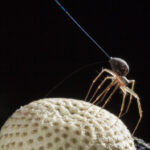Dealing with flies can be incredibly frustrating, especially when they seem to multiply out of nowhere. The buzzing, the landing on food, and the general unsanitary feeling they bring is enough to make anyone reach for a quick solution. One common household cleaner that often comes to mind is bleach. But Will Bleach Get Rid Of Flies effectively? Let’s explore this question and uncover the truth about using bleach for fly control.
While bleach is a powerful disinfectant and cleaning agent, its effectiveness against flies is not as straightforward as you might hope. Bleach, or more specifically, the diluted bleach solutions commonly used for cleaning, primarily works as a sanitizer. It excels at killing bacteria and breaking down organic matter – the very things that attract flies in the first place.
Think about it: flies are often drawn to areas with decaying food, spills, pet waste, and other unsanitary conditions. By cleaning these areas with a bleach solution, you’re effectively eliminating the breeding grounds and food sources that lure flies in. Kennels and areas where pets relieve themselves are prime examples. Regular cleaning with diluted bleach can disrupt the fly life cycle by removing the organic materials where they lay eggs and larvae thrive.
However, it’s crucial to understand that bleach is not an insecticide. It won’t directly kill adult flies on contact in the way a dedicated fly spray would. Instead, bleach plays a more preventative role in fly control. By thoroughly cleaning surfaces and eliminating attractants, you make the environment less hospitable for flies, thus reducing their presence over time.
To maximize fly control, especially in outdoor settings or areas prone to infestations, bleach should be part of a comprehensive strategy. Consider these additional methods to complement bleach cleaning:
- Fly Traps: Commercially available fly traps, like the Flies Be Gone Fly Trap or Advantage Fly Trap, are excellent for capturing adult flies. These traps use attractants to lure flies in, providing a more direct method of reducing the adult fly population.
- Sanitation is Key: Bleach cleaning is a powerful sanitation tool, but it works best when combined with overall cleanliness. Regularly remove pet waste, secure trash in closed bags and bins, and promptly clean up spills to eliminate fly attractants.
- Insecticides: For more immediate and potent fly control, especially outdoors, consider using insecticides like Bifen I/T. These products can be sprayed around trash cans, kennels, lawns, and other fly-prone areas to kill flies on contact and provide residual control. However, always use insecticides cautiously, especially around pets, and follow label instructions carefully.
- Ammonia as an Alternative: In situations where bleach is not suitable, such as on grass or turf, diluted ammonia can be used as a cleaning agent. Ammonia, like bleach, helps sanitize and eliminate odors that attract flies.
For indoor fly problems, different approaches may be more effective. Products like CB 80 and Fly Web Fly Traps are designed for indoor use and can help manage fly populations within your home.
In conclusion, bleach can be a valuable tool in your fly control arsenal, but it’s not a standalone solution for getting rid of flies. Its strength lies in its sanitizing properties, which help eliminate fly breeding grounds and food sources. For comprehensive fly management, especially in outdoor or heavy infestation scenarios, combine bleach cleaning with fly traps, diligent sanitation practices, and, when necessary, appropriate insecticides. Effective fly control requires consistency and a multi-pronged approach, not just a single quick fix.

